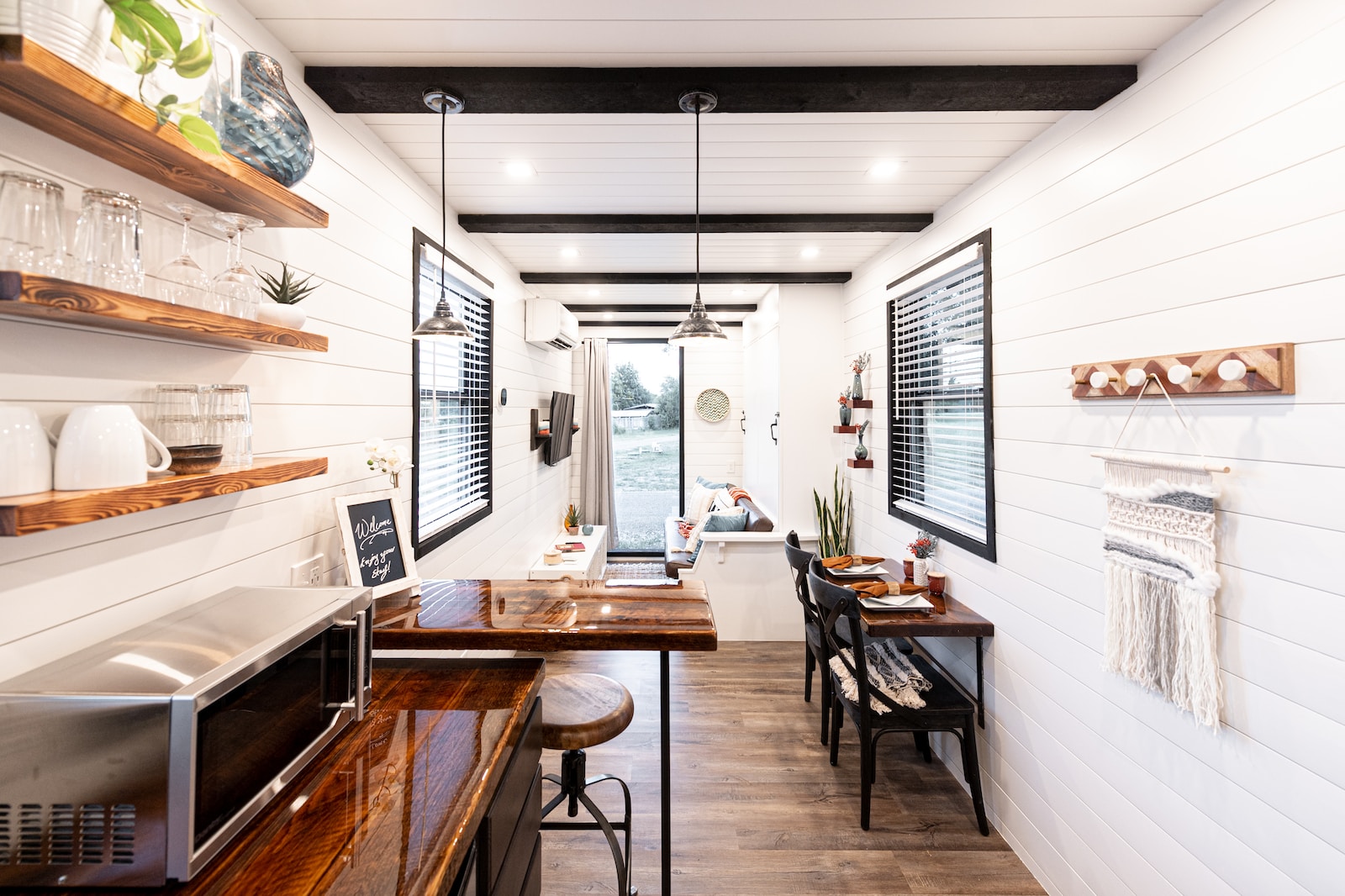Greetings, fellow container home enthusiasts! It’s Lulaa Black, back again with another exciting journey into the world of container homes. If you’ve been following my blog, you know that container homes have evolved from a quirky, eco-friendly alternative into a full-blown architectural movement. Today, we’re delving deep into the art of adaptive design solutions for container homes, focusing on how to make these innovative abodes thrive in varied environments. So, grab your coffee, settle into your favorite chair, and let’s embark on this voyage of creative container home possibilities.
Adaptability: The Core of Container Home Design
Container homes are like the chameleons of the architecture world. They’re versatile, affordable, and eco-conscious, making them a viable housing solution for a wide range of environments, from bustling urban settings to tranquil countryside retreats. The secret to their success? Adaptive design.
Adaptive design solutions for container homes aren’t just about fitting a square peg into a round hole. They’re about taking what may appear to be a confined and rigid structure and turning it into a comfortable, functional, and aesthetically pleasing living space, no matter where you decide to put it. Let’s explore some of the key design strategies that allow container homes to flourish in varied environments.
Insulation and Climate Control

Container homes are renowned for their durability, but without proper insulation, they can become a sweatbox in the desert or an icebox in the mountains. To tackle this challenge, container homeowners have devised a few clever methods to maintain comfortable temperatures.
One approach is to install high-quality insulation materials on the interior walls and ceiling. Spray foam insulation, for instance, is a popular choice. It provides an airtight seal and prevents temperature extremes, ensuring that your container home remains cozy year-round.
In contrast, if you’re adapting your container home to a more temperate environment, consider adding windows or sliding glass doors. These additions not only bring in natural light but also allow for better ventilation, making it easier to maintain a comfortable indoor climate. There’s something quite magical about sipping your morning coffee while gazing out at a serene natural landscape, isn’t there?
Off-Grid Living
Container homes are often embraced by those who wish to reduce their environmental footprint. This means they’re frequently found in remote locations, where traditional utilities can be scarce. To adapt to off-grid living, container homes make excellent use of renewable energy sources.
Solar panels have become the go-to choice for container homeowners who want to generate their electricity. These panels can be strategically placed on the roof or nearby ground structures, allowing you to harness the power of the sun and store it in batteries for use at any time. That’s one less utility bill to worry about and a substantial step toward sustainability.
Additionally, rainwater harvesting systems can help you maintain a sustainable water source, especially in arid environments. This solution not only ensures a reliable supply of water but also decreases your reliance on municipal water supplies. Plus, there’s something undeniably satisfying about knowing that you’re using rainwater for your everyday needs.
Multi-Functional Furniture and Space-Saving Solutions
In container homes, every inch of space counts, and that’s where adaptive furniture and clever storage solutions come into play. From Murphy beds to fold-out dining tables, these multifunctional pieces of furniture allow you to make the most out of your compact living space.
For example, a pull-out couch can quickly transform your living room into a guest bedroom when needed. Likewise, wall-mounted shelves and hidden compartments can turn your container home into an organization marvel. When you have limited square footage, it’s essential to make every nook and cranny count, ensuring that your living environment remains functional and aesthetically pleasing.
Exterior Modifications for Varied Environments
When it comes to adapting container homes to varied environments, the exterior modifications are just as vital as the interior ones. If you’re planning to place your container home in a harsh, coastal setting, consider corrosion-resistant coatings to protect the exterior from the salty air. In colder regions, a well-thought-out roof design can help minimize snow buildup.
Landscaping is another creative way to make your container home blend seamlessly with its surroundings. Use native plants and shrubs to create a harmonious connection between your container home and the natural environment. The right landscaping can provide shade, improve insulation, and enhance the overall aesthetics.
Embracing the Aesthetics of Container Living

Adaptive design solutions are not only about functionality but also about style. Container homes have come a long way from their industrial roots, and today they offer a canvas for personal expression. You can choose to maintain the rustic, industrial appearance or go for a more polished, modern look. The options are endless, and the result can be stunning.
Container homes are known for their ability to blend seamlessly with their surroundings, and this adaptability can be a part of their aesthetic appeal. Think about how you can incorporate local materials or design elements into your container home. For example, if you’re in the mountains, use reclaimed wood for a cozy, rustic feel. By embracing your environment, you’re not just adapting to it; you’re becoming a part of it.
The Container Home Lifestyle
In the world of container homes, adaptability is key. Whether you’re situated on a remote island, in a bustling city, or somewhere in between, container homes have the potential to be a perfect fit. They allow you to live a more sustainable, off-grid lifestyle without sacrificing comfort or style.
As we’ve explored, adaptive design solutions encompass everything from insulation and climate control to off-grid living, multi-functional furniture, and exterior modifications. The key is to think creatively and embrace the potential of your container home, no matter where you decide to place it.
Container homes are an embodiment of the phrase “thinking outside the box,” quite literally. With a little ingenuity and a dash of style, these compact, adaptable structures can become your dream home, no matter the environment.
So, as you embark on your container home journey, remember the possibilities are as boundless as your imagination. Your container home is your canvas, and the world is your backdrop. The only limit is the sky above and the ground below.
Until next time, fellow container home aficionados, keep dreaming and building, and I’ll be back to share more insights from the ever-evolving world of container homes. Happy building, my friends!





















Find Us on Socials